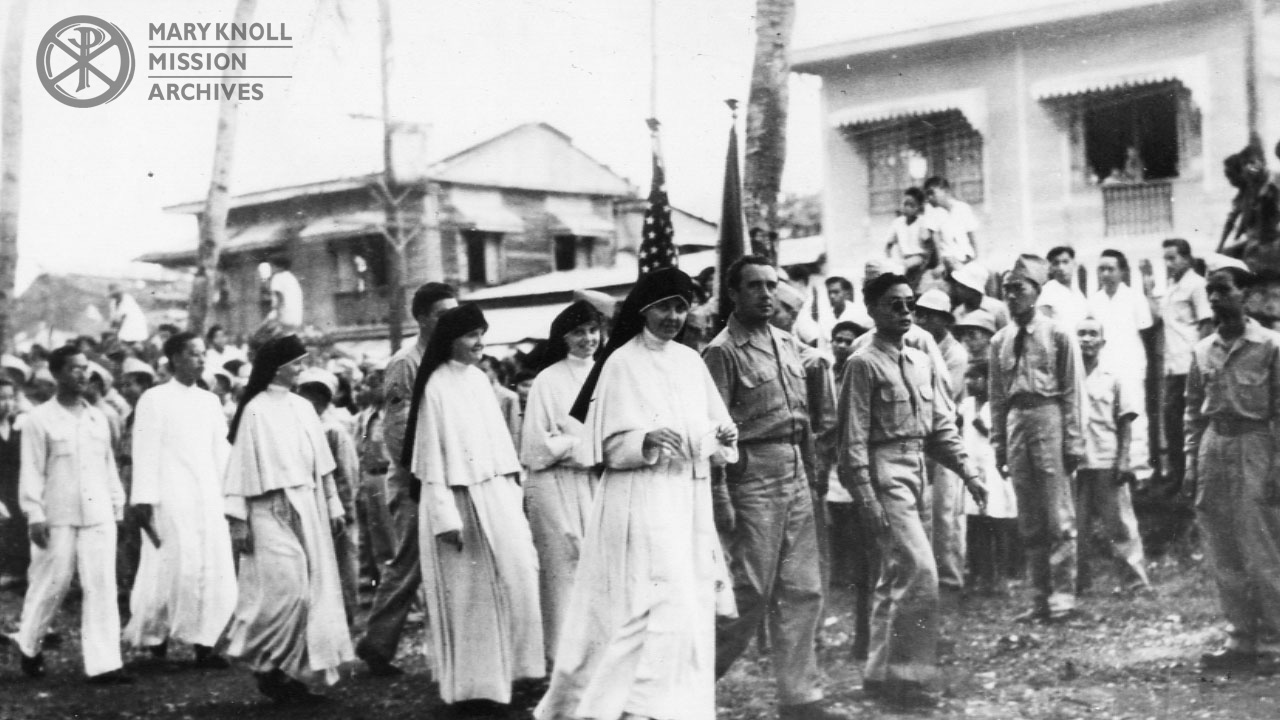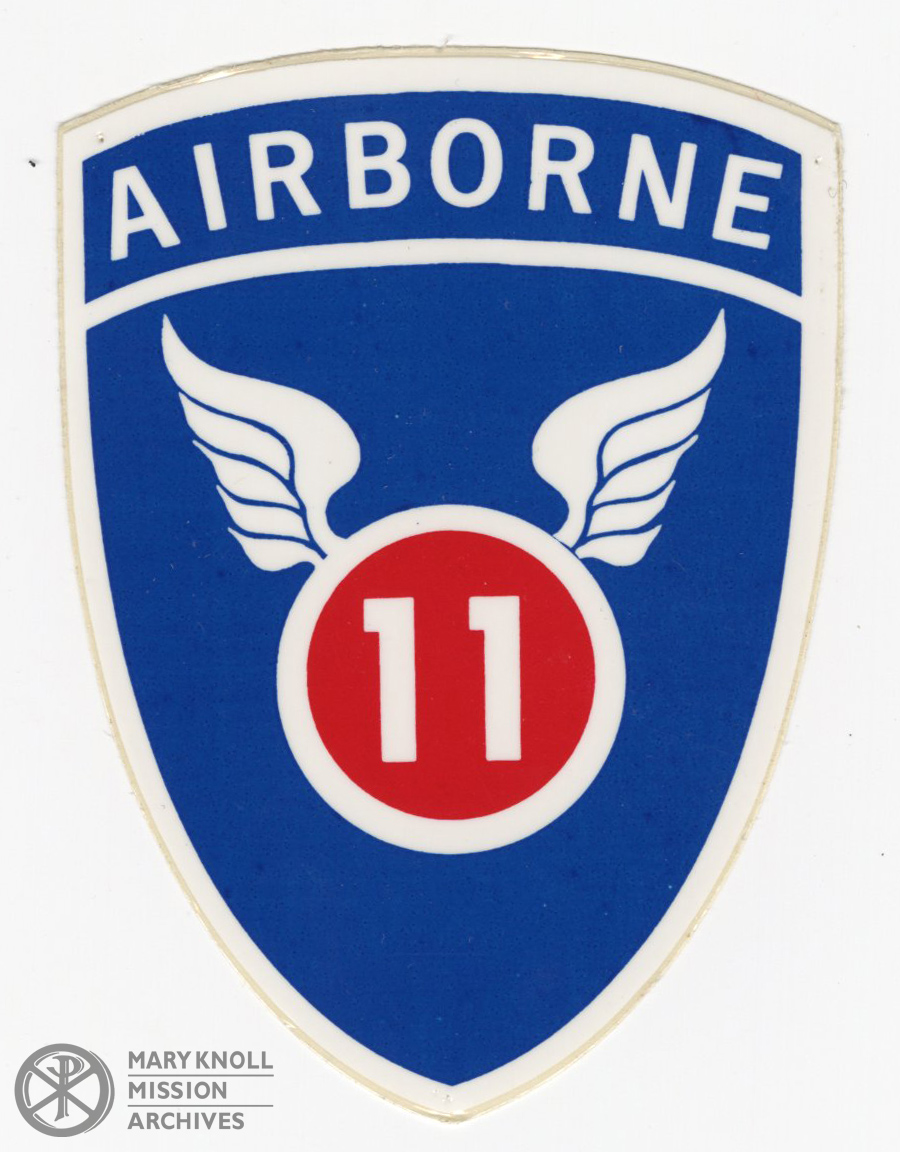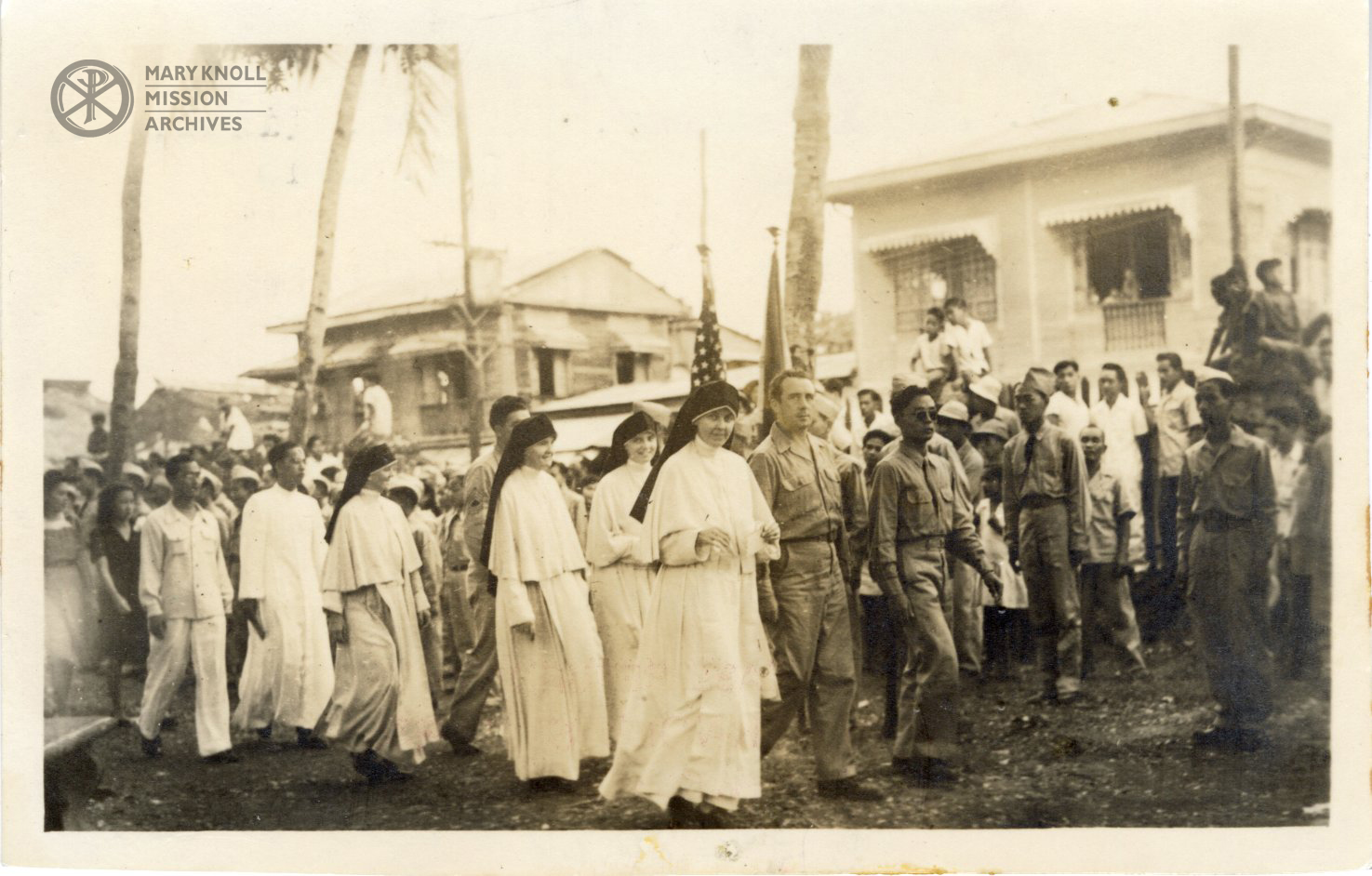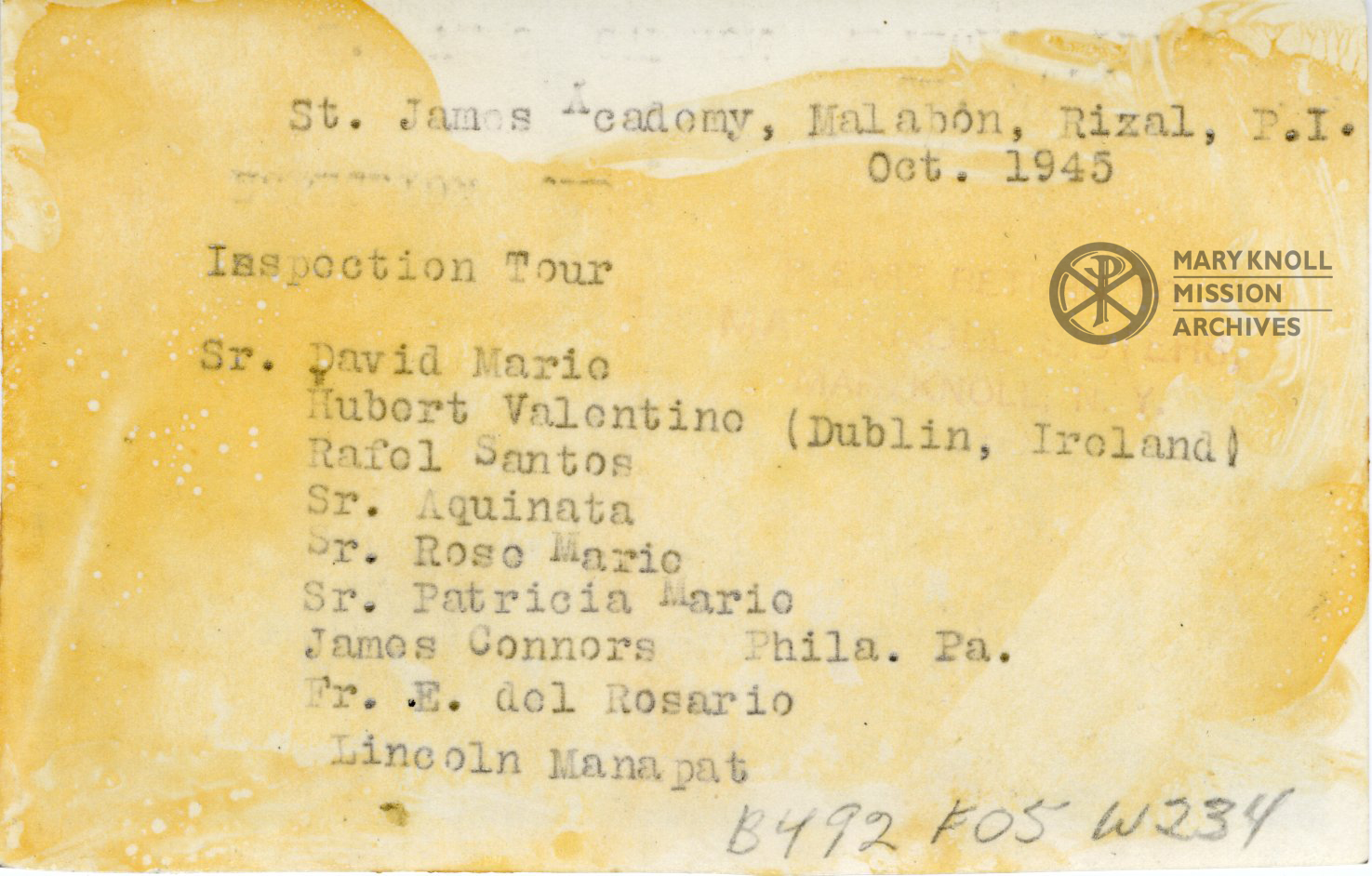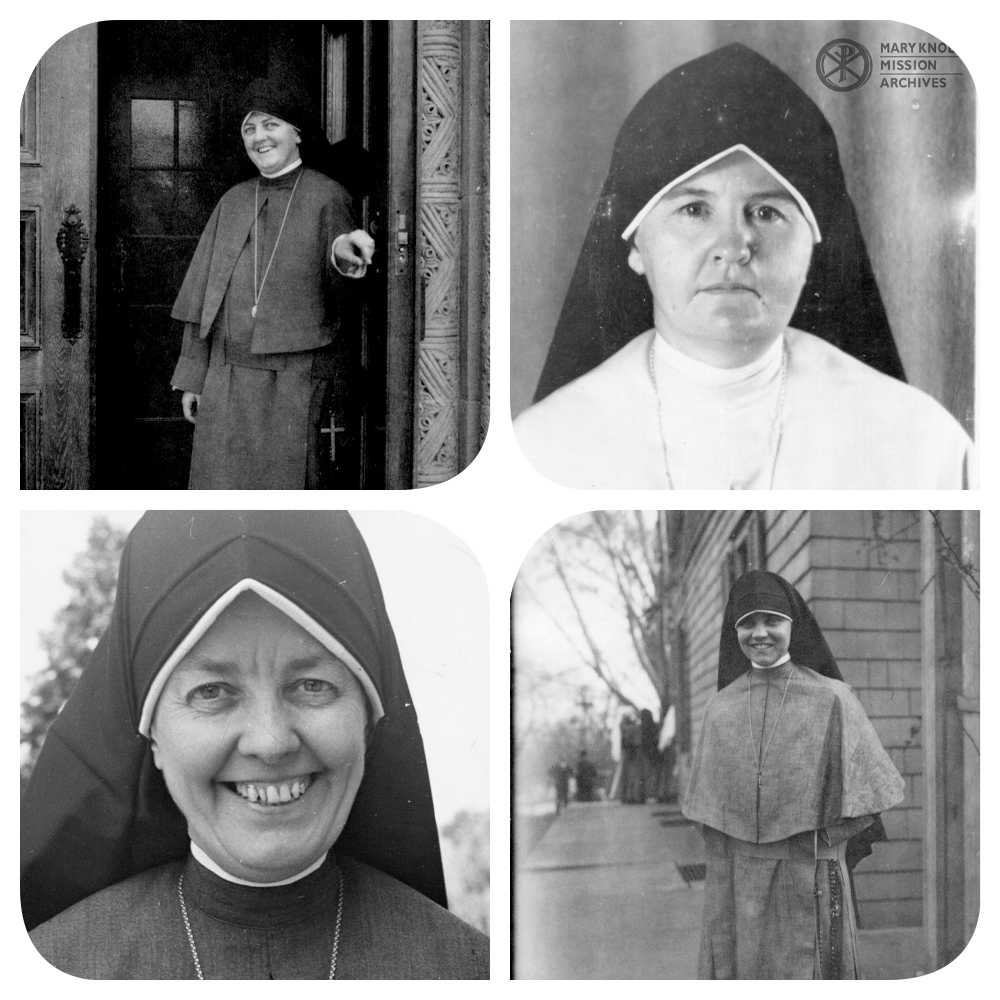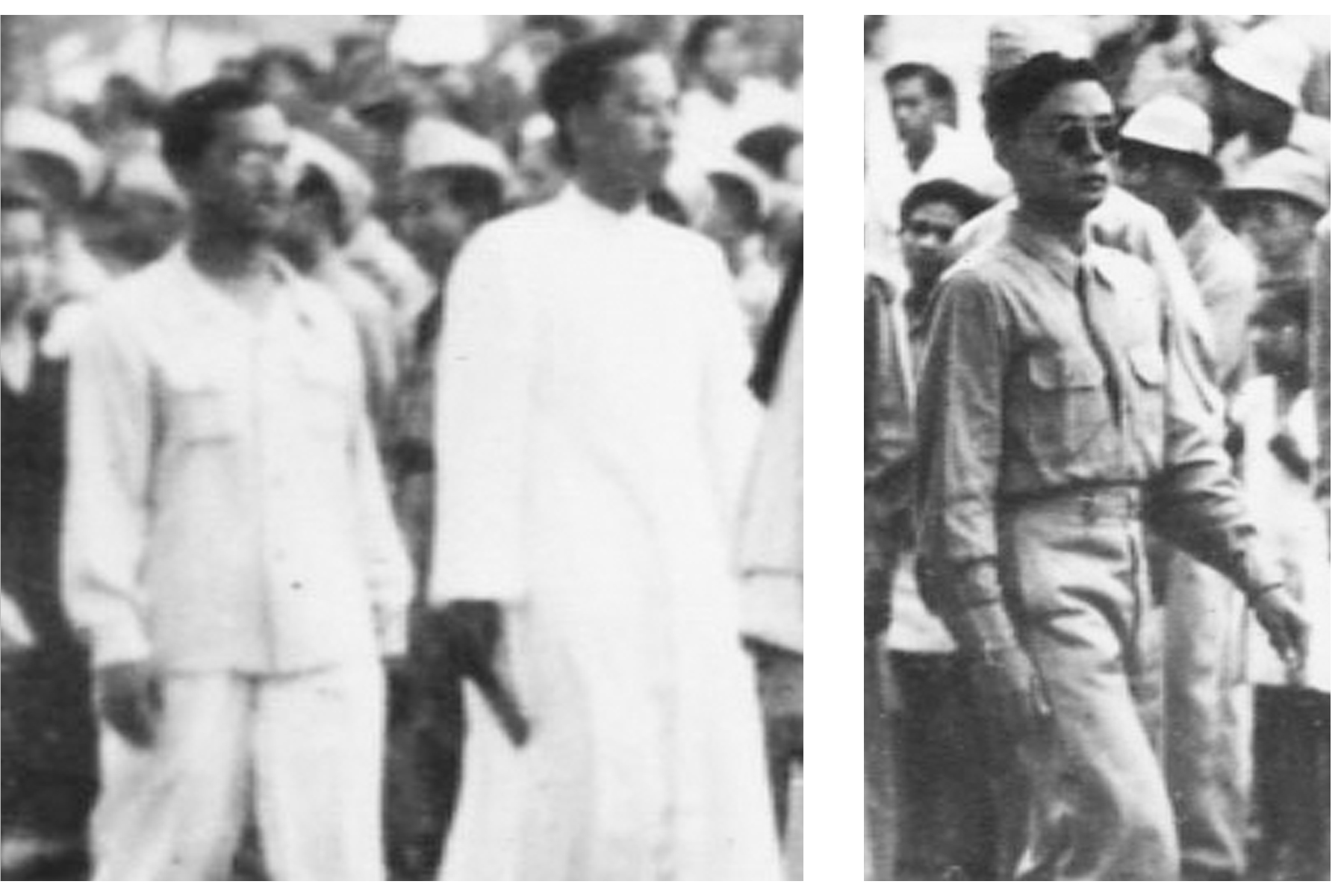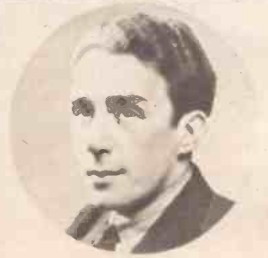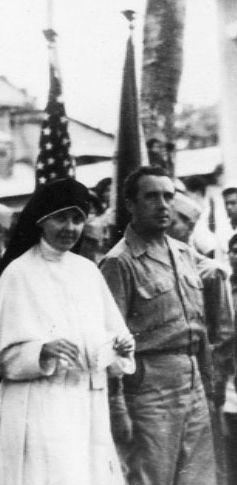Previously I told the story of the Los Baños Raid in the Philippines, using the words of the Maryknollers interned at the camp. Amongst those words, I used many photographs from our archive to showcase the liberation, including this one on the right. Every photograph has a story behind it, but so often that story is lost to time. Little did I know that the story of this photo was indeed recorded in our archive, but the pieces were scattered. Join me as I endeavor to assemble this puzzle using a bit of ingenuity, some guess work, and the assistance of a Genealogist.
A Rough Start
When I first used this photograph, I knew little about the background other than it being taken in the Philippines. The copy I was working with had no date, no one was identified, and I didn’t even know exactly what was going on. At first I was content with this, as so often this knowledge is lost to the sands of time, and yet a researcher spurred me to dig deeper.
An Eleventh Airborne historian reached out asking for more information about the people in the photograph. I had very little information to work with, so I drew on my background as an historian and did some guess work. Using other photos in the collection, I was able to identify three of the four Sisters, but frustratingly I was unable to identify anyone else. I made a few guesses at the date and location, but they were shots in the dark. Ultimately I resigned myself to never knowing the full story, until a colleague of mine found the original.
New Discoveries
A few months later, one of my fellow Archivists, Meagan Cairns, came to me all excited about something she found. In her hand was a familiar photograph, and yet different; smaller and yellowed from age. While going through another collection of photographs, my colleague had stumbled upon the original I had been searching for. On the back, was a list of names, a date, and a location… My First Puzzle Piece! You can see the full original on the right, but the back is a bit hard to read. I will transcribe the information below:
St. James Academy, Malabon, Rizal, PI [Philippines] Oct[ober] 1945
Inspection Tour
Sr. David Marie [Scanlon]
Hubert Valentine (Dublin, Ireland)
Rafel Santos
Sr. Aquinata [Brennan]
Sr. Rose Marie [O’Callahan]
Sr. Patricia Marie [Callan]
James Connor (Phila[delphia] Pa [Pennsylvania])
Fr. E. del Rosario
Lincoln Manapat
Further entries also contained information about the two American soldiers and the context of the photograph. James Connor was Sr. Patricia Marie’s cousin from Philadelphia and Hubert Valentine, nicknamed “Val”, was a friend of his. They were both visiting the Maryknoll Sisters while they made their way home after the war ended. On October 14th, the Filipino Cadets of the St. James Academy held a Passing review, which Val presided over and “acted like a full-general all afternoon”. Another piece! The story was finally coming together.
Unfortunately the names do not seem to be in any order, but now I knew who all the Sisters were. From left to right in the photo, we have Sr. Patricia Marie Callan, Sr. M. Aquinata Brennan, Sr. Rose Marie O’Callahan, and Sr. David Marie Scanlon. These four Sisters, along with Sr. Maria del Rey Danforth, were the first to go back into the Philippines Mission by staffing the now liberated St. James Academy in Malabon. This confirms the location, now I just needed to match the rest of the people in the photograph. Luckily with the location and date for the photograph, I could turn to the Maryknoll Sisters’ Mission Diaries.
The diary entries were able to uncover quite a few interesting details about the photograph. Fr. E. del Rosario was identified as the Assistant Pastor for St. James Academy, meaning he is most likely the man in the White Cassock on the left of the photograph. This also suggest that Lincoln Manapat is the Filipino man next to him, given they are grouped in the list. This suggests that Rafel Santos is probably the other Filipino on the right, leading the procession. Unfortunately I was unable to find any information about who these individuals were.
Sunday, [October] 14. Second Sunday. Military Mass at 730 sung by the boys in uniform. They are certainly impressive in the reverence with which they perform the ceremonies…
In the early afternoon, arrived Jim Connors and Hubert Valentine. They had known each other in Australia and met in Caloocan having hopped on the same truck enroute to see us. Jim was bringing a friend, John Taranta; “Val” had two friends, Al Chocco who came from Carnegie Tech in Pittsburgh, Sr. del Rey’s old school, and Joe Damiano, a drummer boy in an orchestra. The Whole Troup came in at once; it was a grand reunion for most of them had been together in Australia.
In the late afternoon, the St. James Cadet Corps, an army of 200 boys, put on a “Passing Review” on the patio for the benefit of the Sisters and faculty… It seems this is a West Point ceremony and St. James must do likewise. Of course, we invited our GI guests to sit with us. “Val” took the salute from the Cadet Major and acted like a full-general all afternoon. Then we went into Benediction where Val sung the hymns and filled the church with his glorious voice.
In the evening, as we always do when Val comes, we listened to him sing all the glorious songs we love, until quite late.
Malabon 1945, Maryknoll Sisters Diaries
Finding Val the Singer
The first person we began researching was Hubert Valentine, because with a unique name and origin, it would probably be easier to find him. Let’s go over what we know based on the diary entry: He was an American Soldier in World War 2, he has some connection to Dublin, Ireland, and he was known for his singing voice. These all will be important details in the search to come.
First, we looked for his military and birth/death records. For military records, you can check the enlistment records for anyone who joined the US Army during World War II on the National Archives Records Administration (NARA) website here. Searching for “Hubert Valentine” brings up 4 results, and interestingly one of them was born in the Irish Free State in 1913. Our first connection, but the enlistment records are pretty bare bones so we will need more.
My colleague used FamilySearch to find general records regarding a “Hubert Valentine” born in Ireland around the year 1913. We found three good matches, the first being another iteration of his enlistment records. Connection #1! The next was a social security record that gave us a death date, July 22, 2001 and confirmed he was born near Dublin, Ireland. A second connection! Lastly we had an obituary record, with the same birth and death dates, and interestingly it listed his profession: Professional Singer. Now the pieces started falling into place.
It seems like everything connects, but we had to be 100% sure all these records were for the same person. I did a quick google search for “Hubert Valentine singer” and I came up with 3 interesting results. The first is an article from the New York Times talking about Hubert Valentine’s debut as a singer in October 1942, right before he would have joined the Army. This can be linked with the second result, an article from the Catholic News Archives which features Hubert Valentine’s return to singing after spending 3 years in the Pacific theater. This connects with the detail about “Val” singing in the diary entries, basically confirming we have our guy.
The last result is the most interesting: an entry on a music wiki site called Discogs. Here we see a few albums of Irish music connected to Hubert Valentine and luckily enough, a picture. Comparing it with our Los Baños photo, I am nearly certain Hubert Valentine is the Sergeant whose face is obscured. While I cannot fully confirm it, the hair looks right for both images and the other soldier looks nothing like the Discogs portrait. As well, we know Val took the salute from the Cadet Major and “acted like a full-general”, suggesting he has some sort of rank, but not enough to regularly exercise it. Based on my background, a Sergeant seems to fit the bill here.
The Mystery of James Connor
The primary obstacle with researching James Connor was the fact that his name is quite a common one. Revisiting NARA’s enlistment record database, there are many pages of entries for the simple name “James Connor”. Finding an exact match like with Val would be like finding a needle in a haystack, but all was not lost. We at least had a starting point with the facts that he was from Philadelphia and that he was Sr. Patricia Marie Callan’s cousin.
Using the Philadelphia connection, we were able to narrow the search down to three entries for a “James J Connor”. We then poured over census and social security records looking for additional information, in particular info about any parents. We were trying to find the link between a “James Connor” and Sr. Patricia Marie, but unfortunately we could not find any direct connections. The toughest part is we don’t know what exactly “cousins” means here. It could be first cousins, second cousins, distant cousins, or just someone you are just very familiar with. Regardless, we ended up being short one piece for completing our puzzle.
While it is frustrating we could not find the last bits of information, this is actually fairly common in the field of Genealogy. I’ll hand it over to my colleague Meagan to explain how Genealogists deal with incomplete records:
Genealogy & Incomplete Information
Family history research is like building a puzzle; a giant, borderless puzzle where you have to hunt for the pieces across time and space. If you don’t enjoy puzzles, this can seem like an impossible task. For those of us who do like puzzles, it can still be a daunting and challenging experience. That’s why we rely on the genealogical research cycle for guidance. There are several versions of this, but I’ve listed the one I use below.
Genealogical Research Cycle
1. Review what you know about your family.
2. Decide what you want to learn.
3. Locate records using library and archive resources.
4. Work backwards in time without skipping generations!
5. Evaluate your findings and develop new questions.
6. Be sure to ask: Who, what, when, and where?
7. Return to Step #1.
Step #2 and #5 focus on addressing incomplete information within our own documentation, so that we can fill in gaps in our knowledge and focus on the important questions. Remember, not every record or document will contain all the information we need. We do our best to conduct a thorough investigation, using all identifiable resources.
Sometimes the puzzle piece we desperately want is not available, or no longer exists. It’s deeply disappointing when we run into these situation. No one likes a missing puzzle piece. At times like these, it’s good to take a break. Document your research process, and then set it aside. Focus on a different part of your family tree, or do something else altogether.
We accept the things we cannot change, and come back to fight the good fight when we are feeling more courageous.
Meagan Cairns
Archivist, Maryknoll Mission Archives
Thank you so much for joining me on another journey through Maryknoll’s archival records. I love a good mystery in history, even when we cannot fully solve it. I have likened this whole experience to a puzzle because it is an apt way of describing historical research. So often you start with a scrap of information, a single puzzle piece. Through diligent study and careful searching, you slowly build a larger picture. While you are sometimes a few pieces short of a complete puzzle, the journey is worth it all the same.

